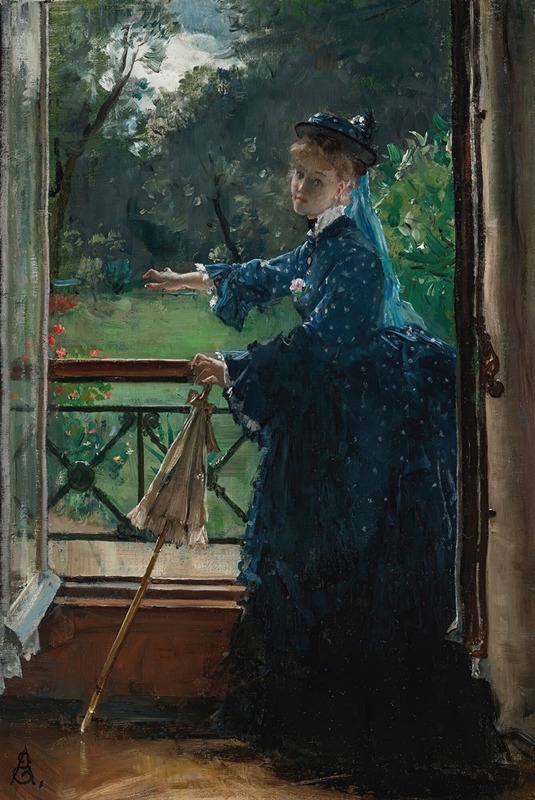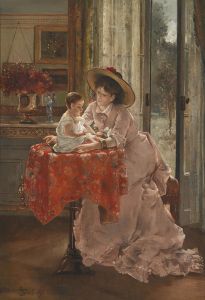
Femme au balcon
A hand-painted replica of Alfred Stevens’s masterpiece Femme au balcon, meticulously crafted by professional artists to capture the true essence of the original. Each piece is created with museum-quality canvas and rare mineral pigments, carefully painted by experienced artists with delicate brushstrokes and rich, layered colors to perfectly recreate the texture of the original artwork. Unlike machine-printed reproductions, this hand-painted version brings the painting to life, infused with the artist’s emotions and skill in every stroke. Whether for personal collection or home decoration, it instantly elevates the artistic atmosphere of any space.
Alfred Stevens, a renowned Belgian painter of the 19th century, is celebrated for his exquisite portrayal of women in elegant settings. One of his notable works, "Femme au balcon" (Woman on a Balcony), exemplifies his mastery in capturing the grace and poise of his subjects, set against the backdrop of contemporary life. Stevens was born in Brussels in 1823 and became a pivotal figure in the art world, particularly known for his genre paintings that often depicted women of the Parisian bourgeoisie.
"Femme au balcon" is a testament to Stevens' ability to blend realism with a touch of impressionistic influence, a style that was gaining popularity during his time. The painting features a woman standing on a balcony, a common motif in Stevens' work, which allowed him to explore themes of leisure, contemplation, and the intersection between private and public life. The balcony setting serves as a transitional space, offering a glimpse into the world beyond the domestic sphere while still maintaining a sense of intimacy and privacy.
Stevens' attention to detail is evident in the meticulous rendering of the woman's attire and the surrounding elements. The clothing, often a focal point in his paintings, reflects the fashion of the era, showcasing his interest in contemporary trends and his ability to capture the texture and flow of fabrics. This focus on fashion not only highlights the social status of his subjects but also serves as a historical record of the period's sartorial elegance.
The use of light and shadow in "Femme au balcon" demonstrates Stevens' skill in creating depth and atmosphere. The interplay of natural light on the balcony and the subtle shadows cast by the architectural elements add a dynamic quality to the composition. This technique enhances the realism of the scene, inviting viewers to engage with the painting on a more intimate level.
Stevens was part of a broader movement of artists who were interested in depicting modern life and the changing roles of women in society. His work often reflects the complexities of these roles, portraying women as both objects of beauty and individuals with their own thoughts and emotions. "Femme au balcon" is no exception, as it captures a moment of quiet reflection, inviting speculation about the woman's thoughts and the world she observes from her vantage point.
Throughout his career, Stevens maintained a close connection with the artistic community in Paris, where he spent much of his life. His friendships with other artists, such as Édouard Manet, influenced his work and helped him to remain at the forefront of the art scene. Despite the changing tastes and styles of the late 19th century, Stevens' paintings continued to be celebrated for their elegance and technical precision.
In summary, "Femme au balcon" by Alfred Stevens is a quintessential example of his artistic style, characterized by its detailed depiction of contemporary fashion, its exploration of light and shadow, and its focus on the nuanced portrayal of women. The painting not only reflects the aesthetic values of the time but also offers insight into the social dynamics and cultural shifts of the 19th century. Through his work, Stevens has left a lasting legacy, capturing the essence of an era with grace and sophistication.















